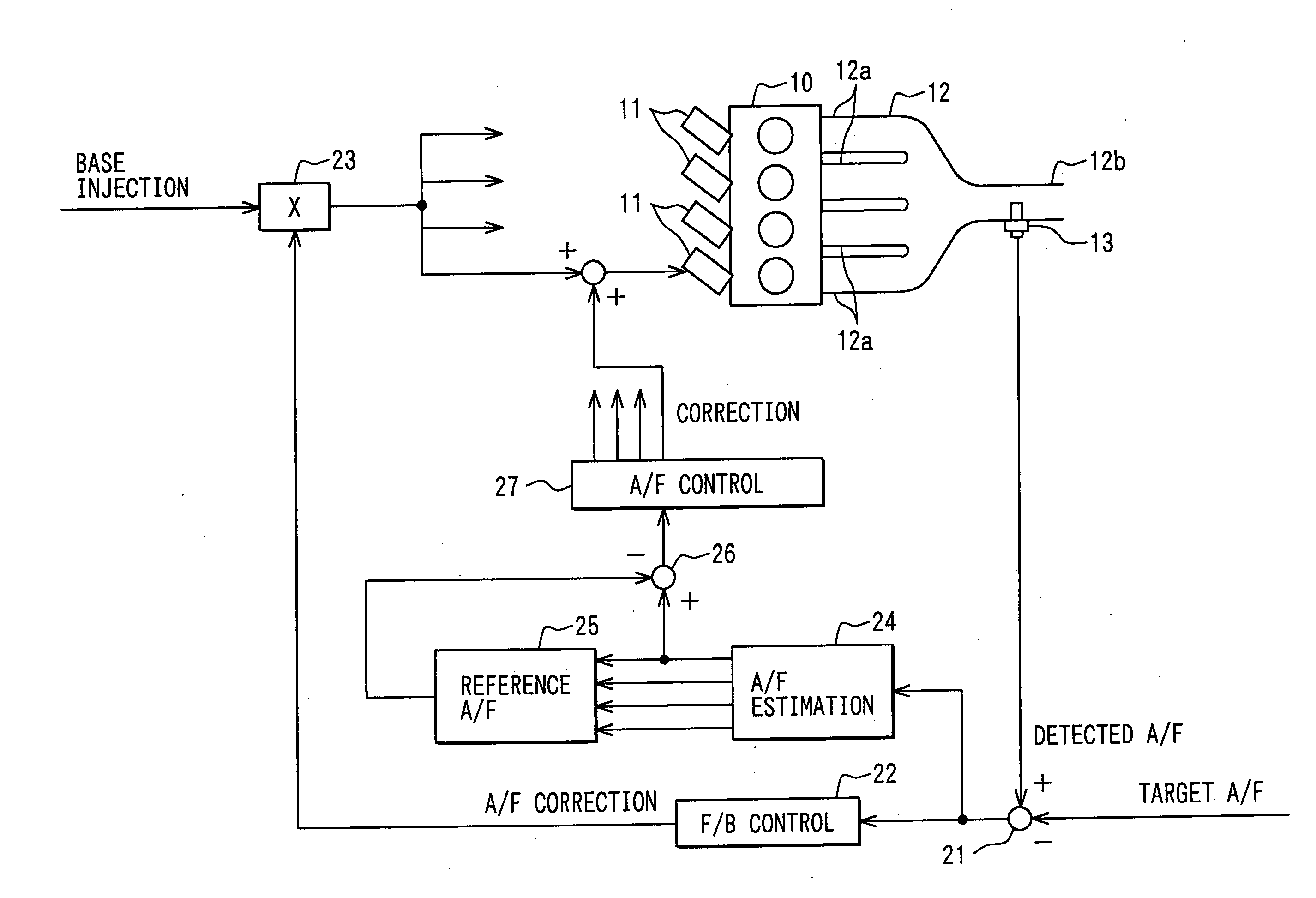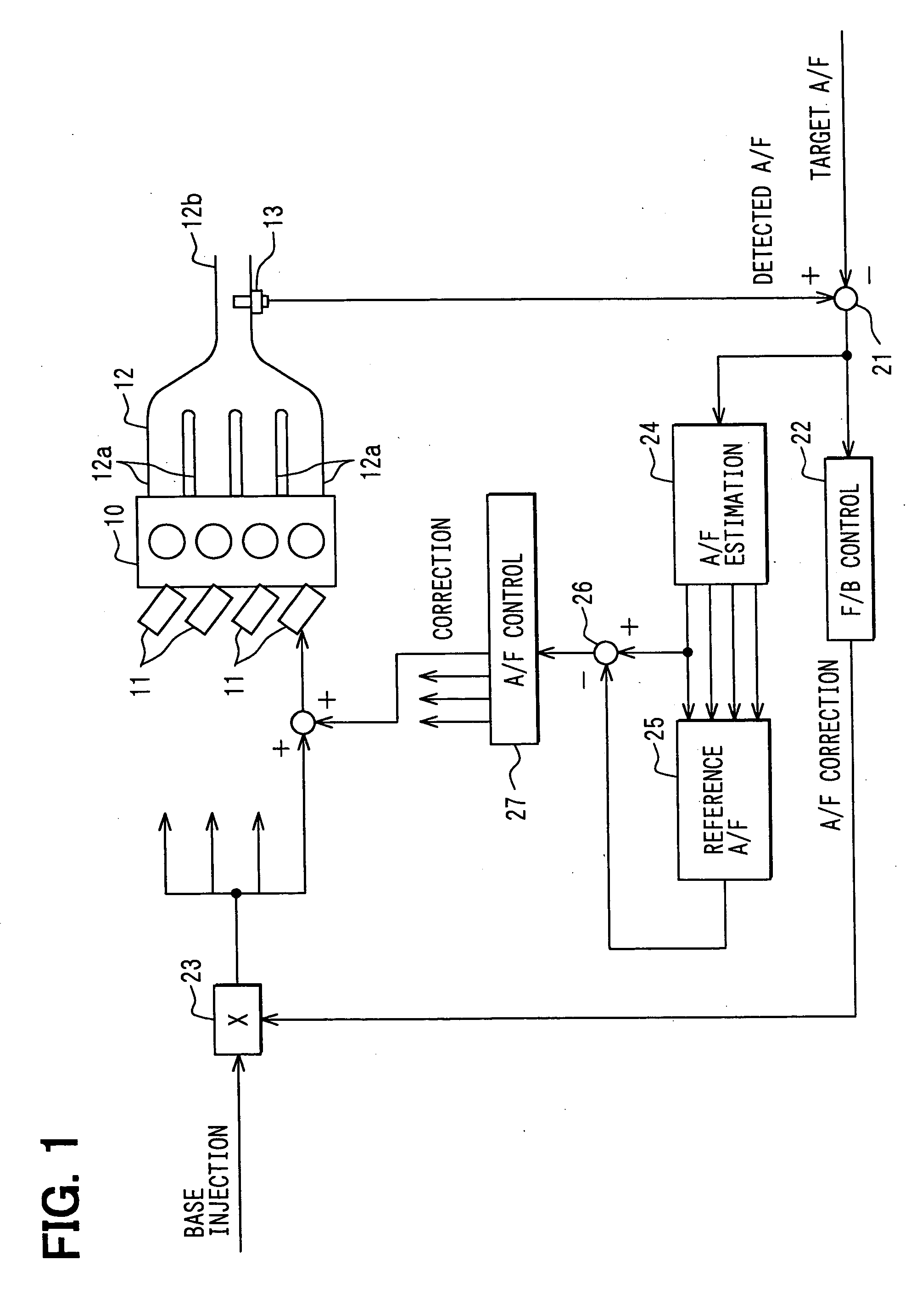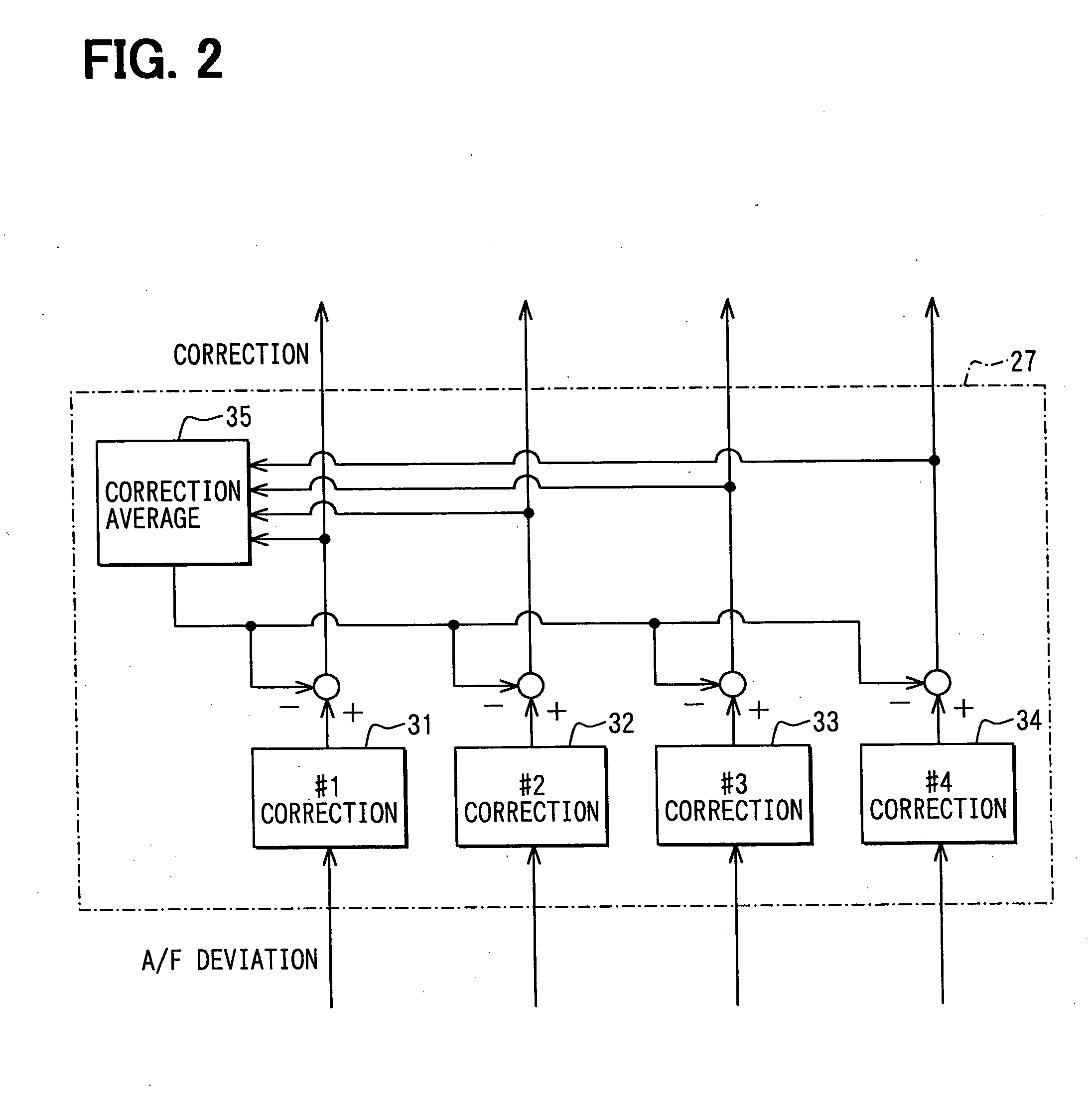Cylinder-by-cylinder air-fuel ratio calculation apparatus for multi-cylinder internal combustion engine
a multi-cylinder, air-fuel ratio technology, applied in the direction of electrical control, process and machine control, instruments, etc., can solve the problems of increasing the amount of calculation, increasing the cost, and insufficient resolution of the variations between the cylinders, so as to improve the accuracy of air-fuel ratio control, improve the accuracy, and improve the accuracy
- Summary
- Abstract
- Description
- Claims
- Application Information
AI Technical Summary
Benefits of technology
Problems solved by technology
Method used
Image
Examples
first embodiment
(First Embodiment)
Hereinafter, a first embodiment embodying the invention will be described with reference to the drawings. In this embodiment, an engine control system is constructed for a vehicle-mounted 4-cylinder gasoline engine as a multi-cylinder internal combustion engine. In the control system, an engine controlling electronic control unit (hereinafter referred to as an engine ECU) is made the center, and the control of a fuel injection amount, the control of an ignition timing and the like are carried out. First, the main structure of this control system will be described with reference to FIG. 1.
In FIG. 1, electromagnetic driven fuel injection valves 11 are attached to respective cylinders in the vicinities of intake ports of an engine 10. When fuel is injected and supplied to the engine 10 from the fuel injection valves 11, in the intake port of each of the cylinders, intake air and the injected fuel by the fuel injection valve 11 are mixed to form a mixed gas, and thi...
second embodiment
(Second Embodiment)
In the first embodiment, the cylinder-by-cylinder air-fuel ratio is estimated on the basis of the detection values of the A / F sensor 13, and the cylinder-by-cylinder air-fuel ratio control is performed so as to eliminate the variations in air-fuel ratios between the cylinders on the basis of the cylinder-by-cylinder air-fuel ratio (estimated value). However, according to an engine operation state, there is a case where the estimation of the cylinder-by-cylinder air-fuel ratio becomes difficult. In the case where the cylinder-by-cylinder air-fuel ratio cannot be estimated, the cylinder-by-cylinder air-fuel ratio control cannot be performed, and therefore, there is a fear that the variations in air-fuel ratios between the cylinders cannot be resolved. For example, the situation as stated above occurs immediately after the starting of an engine, or at the time of high revolution or low load operation. In this embodiment, the variations in air-fuel ratios between the...
third embodiment
(Third Embodiment)
There is conventionally known an evaporated fuel discharge apparatus in which an evaporated fuel generated in a fuel tank is once adsorbed by a canister (fuel adsorbing apparatus), and then, the fuel is discharged (purged) to an engine intake system and is burned in a combustion chamber. In a control system provided with this apparatus, it is proposed to correct a fuel injection amount by a fuel injection valve (fuel injection device) according to a discharge amount (purge amount) of the evaporated fuel. However, in the case of a multi-cylinder internal combustion engine, there is a problem that a purge amount distributed to each cylinder varies due to difference in shape, length and the like of an intake passage from the canister to the combustion chamber, and as a result, air-fuel ratio F / B control becomes unstable.
In JP-A-2001-173485, a purge distribution rate between cylinders is previously considered, and a purge distribution correction coefficient is set, ...
PUM
 Login to View More
Login to View More Abstract
Description
Claims
Application Information
 Login to View More
Login to View More - R&D
- Intellectual Property
- Life Sciences
- Materials
- Tech Scout
- Unparalleled Data Quality
- Higher Quality Content
- 60% Fewer Hallucinations
Browse by: Latest US Patents, China's latest patents, Technical Efficacy Thesaurus, Application Domain, Technology Topic, Popular Technical Reports.
© 2025 PatSnap. All rights reserved.Legal|Privacy policy|Modern Slavery Act Transparency Statement|Sitemap|About US| Contact US: help@patsnap.com



